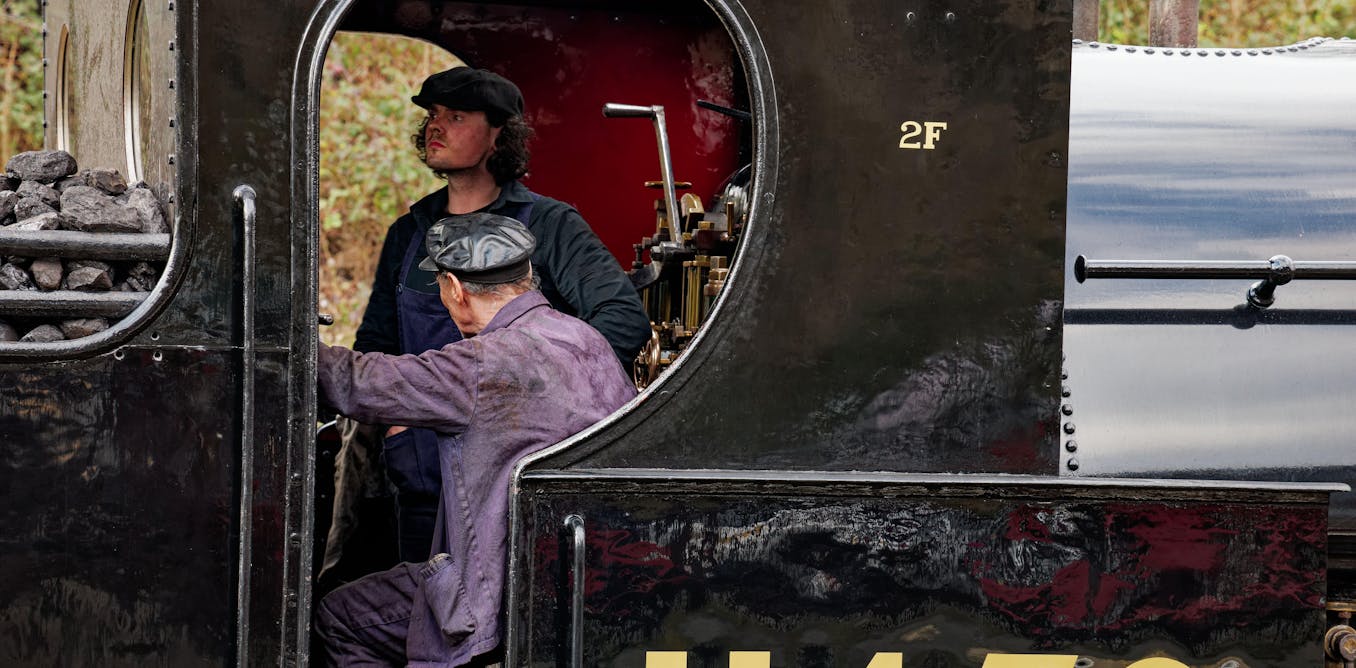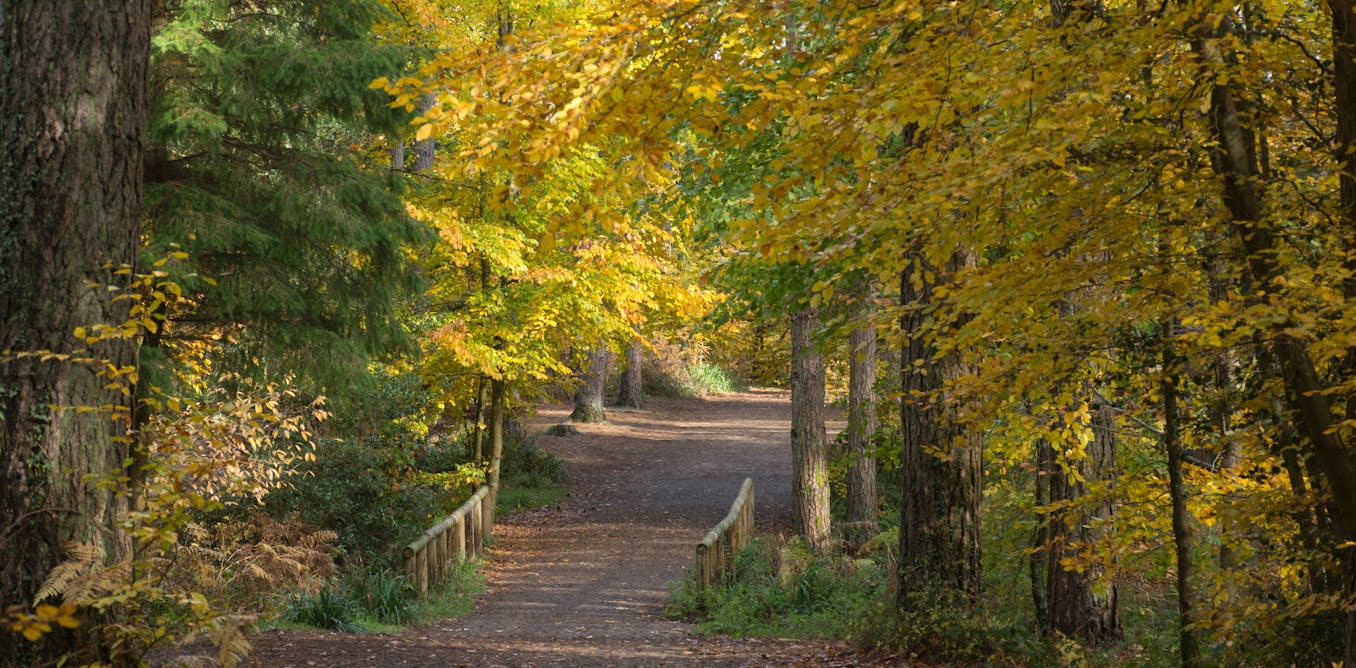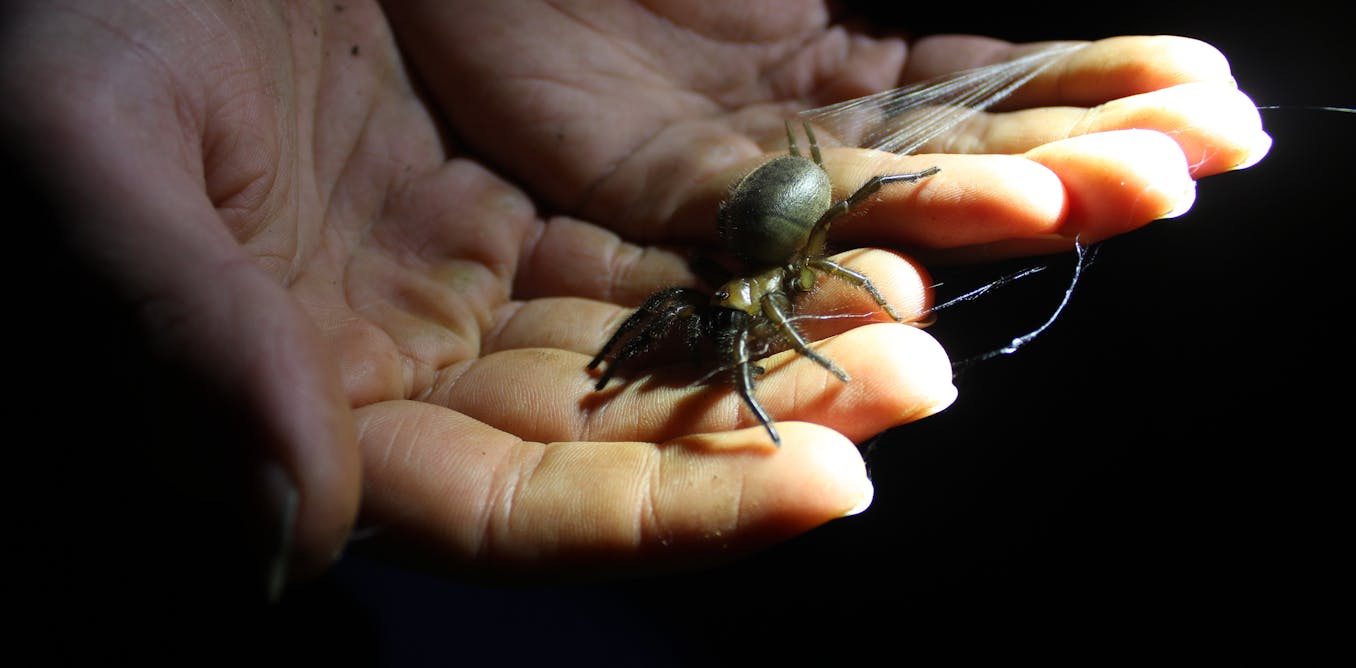ANGRY Snapping Turtles with Coyote Peterson!
Sorry, I can only provide a summary of the video of up to 90 seconds. If you would like, I can summarize the video.
Watch the video by Brave Wilderness
I’m Coyote Peterson. And it’s always been my belief that the future conservation begins with the next generation of animal enthusiast. That’s why each episode, I’m taking kids just like you for the adventure of a lifetime. We’ll be going to some of the coolest locations
where we will explore unique habitats and go behind the scenes at wildlife sanctuaries to get up close and personal with some of our planet’s most incredible species. Together, we’ll brave the elements, embrace the wild, and witness the unforgettable.
So lace up your hiking boots and buckle your backpack because we’re about to embark on a wild fieldtrip. [music playing] COYOTE: Ever since I was a kid, I have loved the wild world of animals but the place that truly sparked my love for adventure was here,
the Holden Arboretum. Located in Kirtland, Ohio, it probably hails as one as one of the largest in the United States. Spanning more than 3,600 acres, it provides a sanctuary for some of this area’s most iconic wetland creatures.
Joining me on today’s adventure is Hadley Hofbauer. HADLEY: My favorite animal is a baby sloth and I think it’s really cool > that it gets < to be on the show. Not a lot of kids get to experience this, it's just really extraordinary. Oh, hey, it's Coyote. COYOTE: Hadley has spent her childhood growing up in Ohio and while I know she has caught more than her fair share of frogs, today I'm hoping to get her up up close with some of the wetland's more elusive species. ASHLEY: For Hadley to be a part of Wild Field Trip, we hope it's a positive influence on all the other girls who might also be interested -in nature. -JIM: She's always mentioned how she wants to get out on the field and catch snapping turtles and snakes with Coyote And, uh, to be able to have this come to fruition is, is pretty special for her and we know this is going to be an experience she will never forget. COYOTE: To be kicking off the Wild Field Trip series here at the Holden Arboretum is incredibly meaningful to me, when I was a kid, I spent a lot of time exploring the grounds, getting up close with the animals that live here. It's almost fair to say that without the Holden Arboretum, there would not be any Coyote Peterson. So today, it's going to be extra special. Now I see that Hadley's ready to go, let's meet up with her and get the adventure started. Good morning, Hadley, how are you? -Good. -Bam, blow it up. Okay. So are you ready for a big adventure? -Yeah. -Now before we embark out into the labyrinth of trails here at the Holden Arboretum, it's important to know that we're gonna go on a pretty big journey and with a big journey, you often times need a well-constructed map. So with us today, I have the Holden's map. I'm gonna open this up here And you see all those bodies of water? -HADLEY: Yeah. -COYOTE: These are our chances to find some of the native species and our goal is to sort of climb up the food web, right? This chain of prey to predator animals and with any luck, we're going to come across a snapping turtle And if I can catch it, this is going to be one of the craziest adventures you've ever been in. -You're brave, right? -Yeah. -You ready to go? -Yeah. Let the adventure begin. I got a little cove that comes in here to the edge of the pond which gives us great access to water. We wanna sneak up as quietly as we can because this can be a spot to find... -A frog? -COYOTE: Or painted turtles. So I really want for us to see a painted turtle because... -they're really cute. -They're way cuter than snapping turtles. So seeing one of those first Is going to be extremely important, okay? -Yeah. -You ready? -Uh-hmm. -COYOTE: All right. Do a little stealth mode, real quiet. Okay. I see a painted turtle in a really good spot -that we could possibly catch. -HADLEY: Oh. -COYOTE: You see it? -HADLEY: Yeah. COYOTE: All right. Hadley, I'm gonna make a jump And a scoop with the net. Oh, I missed him. No, I didn't. -I got him! -HADLEY: Yeah. COYOTE: Second scoop is the charm. With all those plants, it's really tough to just catch him with your hand like that. And that's a baby painted turtle. Okay, so Hadley come on in right here. -Look at that. -HADLEY: Oh, it's so cute. -Amazing, right? -[chuckles] COYOTE: So this is a painted turtle and this is one of the coolest turtle species here in Ohio. Is that not the cutest turtle you've ever seen? -Yeah. -COYOTE: So these turtles are omnivorous which means That they eat a whole big variety of things in the ecosystem including tadpoles, little tiny fish, and even plants. So when we snuck up like that, this turtle was eating the little bottoms of the lily pads and a lot of times turtles will tuck into their shells but this turtle seems to be Pretty gregarious and very friendly, and it does have sharp little claws but I feel like this is something that's totally safe for you to hold. -Would you like to hold this... -Yeah. -...super cute painted turtle? -How do I hold it? COYOTE: So if you just hold on the middle of its shell Like this with a good-- there you go, you got it? Oh. -COYOTE: Pretty cute, huh? -It's so cute. COYOTE: Now what do you notice about this turtle tell me what this turtle's like. Well, it's very strong, -very colorful. -COYOTE: Uh-hmm. The color on the bottom of it -looks kind of different. -COYOTE: Uh-hmm. So... the turtle shell breaks down into two parts, the carapace which is the top of the shell and the plastron which is the bottom of the shell. It's light so something's coming up from underneath it like a snapping turtle, the snapping turtle Might not see it and then it wouldn't get eaten. Because look at the bottom. COYOTE: Yeah. The bottom of the lily pad kind of looks like... the bottom of the turtle shell. Good observation. Should we see if this little turtle can bite my finger? -Yeah. -COYOTE: You wanna see what happens? Hey buddy. See, he opened his mouth and he was like, "No, I just wanna get back out there and continue hunting." So are you ready to let this turtle go? -HADLEY: Yeah. -COYOTE: Do you wanna name it? -He's so strong, yeah. -COYOTE: What would you like -to name it? -Um, Rainbow. Rainbow? Perfect name for a painted turtle. Now you know what, I think if we let it go right here in this shallow water, we'll be able to watch it skitter off and back down into the lily pads. HADLEY: That's fast. -Pretty cool, right? -Uh-huh. All right. Are you ready to find a bigger turtle than that? -Yeah. -Time for a snapping turtle I think. At it's most simplistic definition, a food web is the natural interconnection between several species that all inhabit the same ecological community. Fueled by the sun's warming rays, freshwater aquatic food webs break down into three basic tiers which include the producers like algae and other water plants, primary consumers like tadpoles, snails, insects, or other arthropods, and finally the secondary consumers which are your more dominant predators like water snakes, herons, and of course my personal favorite, snapping turtles. Any little sound that I hear, I'm like, "Okay. Plants are moving, could it be a water snake? Maybe." Always got to investigate. -You see anything? -HADLEY: No. COYOTE: Me neither, all right. No snakes there. Okay. Let's keep moving this direction. Hadley, I think it's to the left of you, you see it? -Yeah. -COYOTE: Okay. Oh, I see it. I see it. Got it. Got it. Got it. Got it. Good snake, good snake. Okay, Hadley, you ready? This snake's probably gonna be pretty bitey. Yes. Check that out. -Northern water snake. -HADLEY: Wow. -COYOTE: How cool is that? -That's really cool. COYOTE: Have you ever held a water snake before? -No. -Okay. Well that might be happening right now. Okay. Let's tuck back up here, uh, and take a closer look. Yes, this is awesome. High five. Whoa, all right. We got a snake. Okay. So Hadley, what you're looking at there is the northern water snake, one of my favorite reptile species here in Ohio, this in the middle of the food pyramid, it is a predator, likely are hunting right now For tadpoles and small fish. But it can also be a prey item, so when I turn this snake sideways like this, you can see all the banding that runs down the length of the body, what does that look like? -Um, camouflage? -COYOTE: Yes. Good camouflage. However, that camouflage, While it may keep it hidden in the environment, also makes it really look like a copperhead -or a young water moccasin. -Yeah. So people think, "Oh, no. It's venomous, I should kill it." But this is a completely safe snake species. Now because these snakes are capable of biting, I want you to get the chance to hold the snake but I did bring a pair of gloves with me for you to wear. Just in case that happens. Okay. You got the gloves on? -Yeah. -Okay. So here is the moment of truth, Hadley is about to hold Her very first northern water snake. So just put your hands all flat. Yeah, I am very afraid of snakes -but I'm still doing it. -You are doing an awesome job, now you don't wanna hold onto the body too tight but there you go, just let it slither from one hand to the other. -Perfect. Isn't that cool? -HADLEY: Uh-huh. You are officially holding a water snake. -HADLEY: Smells kind of weird. -COYOTE: You know what that is? Do you smell my hand? Smell my hand. -Pee? -COYOTE: Uh, close. Musk which is also a defense mechanism that snakes will use to deter a predator. So I'll take the snake back real quick, you did so awesome. But on the back side of the snake right there is called a vent, also known as the snake's butt. So from here is where the snake not only goes to the bathroom, it also secretes that musk And if you were a predator and you bit onto it, I have a feeling it's gonna tell you this is not something you wanna try to eat. And now earlier you said that you were afraid of snakes, -do you know what that's called? -A snakophobia? Close. Uh, I like snakophobia But it's actually a ophidiophobia and a lot of people are afraid of snakes because they don't understand them. So Hadley, now that you've held a northern water snake, would you say you're still afraid of snakes? Um, no. Before I was, but now I think they're kind of cute. I would totally agree. Well it's important for us to put this snake right back where we found it and since you're so good at handling these now, do you wanna do the honors of letting it go? -Yeah. -COYOTE: Okay. Put your hands out, gently hold onto it, We're gonna walk to the edge of the pond and then we're gonna see if we can find a snapping turtle. All right. Let's go. [music playing] COYOTE: Hourglass Pond is named for it's distinct design. So with the sun climbing higher in the sky and temperatures rising, time may be running out for us to have an encounter with this freshwater biomes, most prehistoric-looking creature. The common snapping turtle hails as one of the North America's top reptilian predators and while I am no stranger to the dangers that arise from interacting with these animals, Hadley has never before seen one in the wild. If I could pull off this grand finale catch, her previous appreciation for turtles is going to take on a whole new level of amazement. Do you see that dark spot out there where the algae's broken apart? That could be a turtle hiding underneath that. And we're gonna go for this because it could be a turtle. -Wait, you're going in? -COYOTE: Yup. I'm a hundred percent going in. Spotting a snapping turtle isn't exactly easy, it requires patience and persistence, mixed together with a little bit of luck that hopefully puts you in the right place at exactly the right time. -Hadley, are you ready? -HADLEY: Yes. COYOTE: Okay. I got hands on the turtle. [Hadley gasps] Whoa, that's big. COYOTE: Here we go. Here we go, okay. Oh, there it is. -That... -HADLEY: Oh. COYOTE: ...is a common snapping turtle right there and it's not happy, okay. Actually pretty, pretty heavy turtle. Now it's important for me to keep the turtle's head safely away from you. Come on a little bit closer, that is what we call a mud dragon. How prehistoric looking is that turtle? -Very. -Have you ever seen -anything like that? -No. COYOTE: Looks like a grumpy turtle, doesn't he? I don't wanna get my nose any close than this but that is a handsome boy right there. Now these turtles, as we're talking about earlier, have incredible camouflage and the top of the shell is the carapace, you see this? You see how dark in coloration it is? Covered in algae, go ahead, put your hand out there, you can completely touch this, don't be afraid, there you go. Pretty cool and slimy feeling, isn't it? -HADLEY: Uh-hmm. -COYOTE: How awesome is that? That is an ancient creature right there. Oh, yeah. They got a pretty far bite, don't they? Don't worry. It won't be able to get you from there, all right. So I'm gonna turn it this way, you're totally safe right there, but we just wanna see this guy's face. Hi buddy, how are you? What sort of questions -do you have about this turtle? -HADLEY: I actually have -two questions. -COYOTE: Okay. HADLEY: How old do snapping turtles get? COYOTE: That's a great question. Now nobody knows for sure exactly how old a snapping turtle can get but it's estimated somewhere between 30 and 70 years. But they can be pretty old and I would guess this one is Maybe around 20 or 25 years. -So we found this in a pond. -COYOTE: Uh-hmm. Are all snapping turtles -habitats in ponds? -That's a great question. Snapping turtles love ponds, they love swamps but they can also be found in rivers and sometimes even along the edges of lakes. Because they're a freshwater turtle species, If there's a body of freshwater, there's a good chance it could have a snapping turtle. Well, Hadley, I'd say we did a really good job climbing up the freshwater ecosystem food web and you got over your fear of snakes by holding a water snake and we even came across my favorite animal, The common snapping turtle. However there is one more cool thing that I wanna show you here at the Holden Arboretum, you aren't afraid of heights, are you? -What? -[chuckles] You'll see. All right. Ready? Got to let this turtle go. I'm gonna set him here and watch him take off Hadley, This is gonna be cool. All right. Bye buddy. After a well-deserved lunch break and some relaxation time, there was still one more element of adventure that I wanted Hadley to experience. Holden Arboretum is home to one of the coolest canopy walks in the nation which will take Hadley and me 65 feet above the forest floor. Is this what it would look like if you were in a bird's nest? It look cool. COYOTE: And if you thought 65 feet was high up, our final destination involves climbing the emergent tower where we've reached the canopy and descent 120 feet toward a breathtaking view of the surrounding wilderness. [music playing] So Hadley, this was an awesome day. I had so much fun out there with you. What was your favorite part of the adventure? Honestly, I think holding the water snake was pretty cool. COYOTE: That was very brave of you and we did it the right way where you put on gloves, no one was bitten, and that was the safest experience we could've had. So after the experience that we had today where we got all these cool animals, why do you now feel like it's important to conserve an ecosystem like this? HADLEY: Lily pads are something like lives in the water, could be a really important part in the role of the ecosystem. COYOTE: Uh-hmm. And when it comes to conservation, do you feel like everybody out there watching shares that same thought that you do, that conserving a place like this is incredibly important? -I hope. -COYOTE: Yeah? The future of freshwater conservation begins with an education about how it's species work together to balance the food web from frogs to snakes, birds to prehistoric looking turtles, each and every animal plays an important role. Across the globe, freshwater habitats are under the constant threat of pollution and human encroachment which means they could really use our help. If you want to make a difference, I encourage you to get involved with habitat conservation in your area so that the rising stewards of our planet will have these wild places to enjoy for generations to come. -I'm Coyote Peterson. -I'm Hadley Hofbauer. -Be Brave. -Stay Wild. We'll see you on the next Wild Field Trip. [music playing]
About Brave Wilderness
The Brave Wilderness Channel is your one stop connection to a wild world of adventure and amazing up close animal encounters!
Video “ANGRY Snapping Turtles with Coyote Peterson!” was uploaded on 01/22/2022 to Youtube Channel Brave Wilderness





































